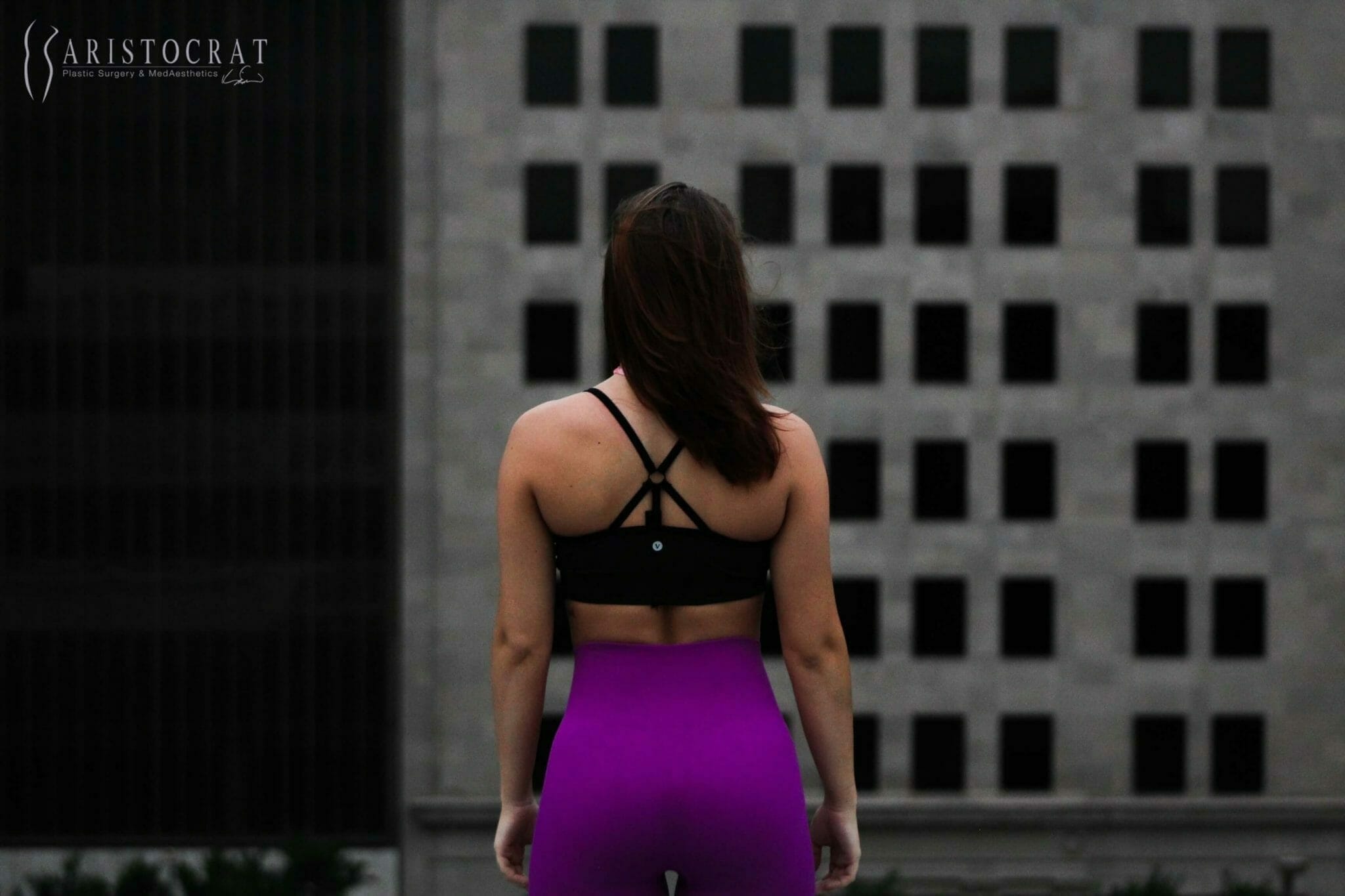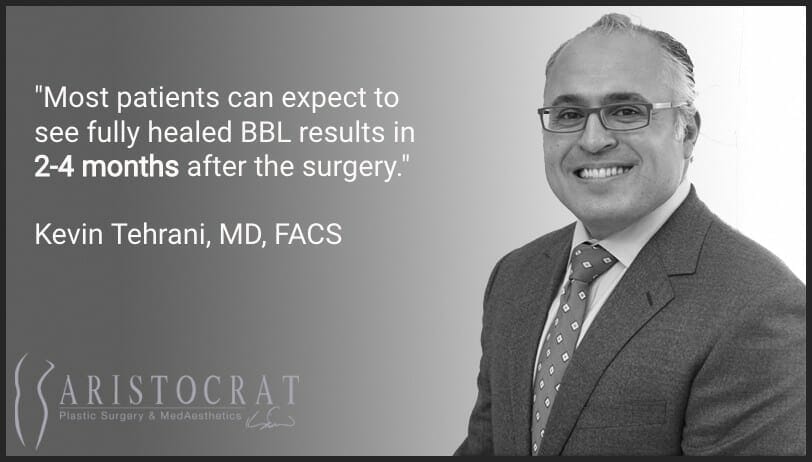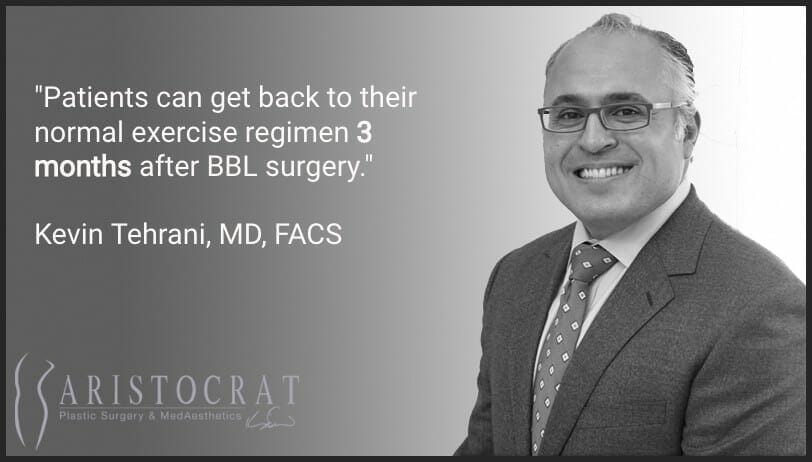Is BBL Worth It? Patient Story
Too much belly fat? Not enough fat where it counts? BBL surgery is a two-in-one solution that transfers fat from areas where it doesn’t belong to your buttocks.
Brazilian Butt Lift (BBL) is an increasingly popular plastic surgery procedure that can kill two birds with one stone: it can reduce belly fat and transplant that fatt into the buttocks—augmenting their size. In 2017, 20,301 BBL procedures had been performed in the U.S., according to the American Association of Plastic Surgeons. This indicates a 10% annual increase in the procedure’s popularity.
During the procedure, liposuction is performed in selected body areas that contain excess fat. Usually, those spots end up being the abdomen, the sides, the hips and the lower back.
The collected fat is then cleaned up and prepared for transplantation. After that, the surgeon injects the fat into specific areas in your buttocks to create a fuller and more defined butt shape.

BBL is an alternative to traditional butt-augmentation methods, such as implants. The results often look and feel more natural to the patient. However, there are significant risks involved with the BBL procedure, which means that it’s imperative to find a board-certified surgeon who has performed multiple BBL surgeries successfully.
The BBL Story of Octavia
For Octavia, a 24-year old Fashion Merchandising graduate, her BBL transformation began with a number of medical tests. Since Brazilian Butt Lift is one of the most major surgical procedures performed today, it is imperative to make sure the candidate is of good health and able to handle the stress and recovery.
“First off, I had to get all this paperwork and bloodwork done,” says Octavia. “I had to go to my local doctor here in LA, they did all of the background work done and ran all these tests to make sure I was healthy enough to actually get a BBL. Because if I wasn’t, there were going to be certain things that I would have to do to get myself healthy enough.”
What are these “certain things”?
For most surgical procedures, this primarily means being within 30% of your ideal weight. This is extremely important for both patient satisfaction—overweight patients often end up gaining all the weight back after their surgical procedures, which makes the effects of BBL negligible—as well as patient safety, as obesity is a major risk factor in any surgery.
“After getting my blood drawn and getting all the tests done, they had come to find out that I was healthy enough and I was medically cleared,” Octavia continues. “It’s a whole list of things on that medical sheet. […] Basically, it’s just saying that you’re medically healthy and strong enough to withstand surgery.”

Getting Ready for Day X
30-40 Days Before Surgery
Following the successful tests, the surgeon gave the young woman instructions on what to do and what not to do before her procedure.
“For example, drinking alcohol, smoking,” Octavia reads from a list her doctor gave her. “30-40 days before surgery you have to stop birth control, don’t use any weight loss medications, you can’t use any drugs and you also need to stop drinking.”
1-2 Weeks Before Surgery
Moving closer to day X, the patient was given an additional set of things to avoid. Octavia was instructed to stay clear of alcohol, avoid taking ibuprofen or aspirin and stop taking any vitamins, supplements or even protein shakes. This might seem like an over-the-top requirement, but it goes a long way in making sure nothing goes wrong during or after the surgery.
“Also, another thing my doctor wanted to make sure of it is that my BMI was under 31,” Octavia tells in her video. “For example, if your BMI is over 31, there are extra precautions they suggest you take. Mine was really high, around 29.”
The first meeting at the clinic was about getting all the gear needed for post-op recovery and signing the necessary agreements. The woman didn’t meet the surgeon—instead, the nurses and the physicians walked her through the process.
“First off, they sized me for my faja,” Octavia continues. “A faja is a compression garment that you’re gonna have to wear after the surgery as it keeps your body ‘intact.’ I got my faja over there, I got my foams over there, and I also got my ab board over there. These are things that you need just to keep your body secure.”
The Day Before Surgery
The day prior to surgery, Octavia had some preparations to do. This involves taking a bath with an antibacterial soap. The woman was instructed not to put any lotions or creams on her legs.
“You have to take off any artificial nails,” Octavia reads from her instructions for pre-op preparations. “It says ‘don’t wear any dark nail polish’, and do not eat or drink 8 hours before the surgery. This includes water, gum or mint.”
Surgery Day
At the day of the surgery, the patient had to get to the clinic at 5:15 AM. She did a urine test for drugs—this is done to ensure the patient’s safety.
Octavia emphasizes that once she met the doctor, she immediately felt like she was in good hands.
“I feel like my doctor actually made me feel more comfortable,” the woman confessed. “I like my doctor. He answered all of my questions. My doctor is what made my experience better. My doctor made the experience comfortable particularly for me”
The key here is that your doctor will always listen to your particular concerns and custom tailor the procedure to your needs.
Right Before Surgery
Going into the surgery, the 24 year-old woman had a lot of concerns. It was her first time under the knife, and she was nervous. She was also anxious about going under the general anaesthesia.
“That was something that was really wearing it on me since I was since I’m just a nervous person,” Octavia says. “Also, I do not like needles. Believe it or not, I really, really, really dislike needles. Needles make me faint.”
Determined to go through with the procedure and “do what it takes”, Octavia took the faja she bought some time ago and, wearing her compression socks, followed the nurse into the operational room.
The actual surgery didn’t begin until 10 AM—due to all the tests and preparations required. During this time, Octavia says, it helped tremendously to have a close family member around to keep her calm and comfortable.
“My mom was making me feel a lot more conscious,” Octavia says openly. “I didn’t know what was going on. I was very nervous. But after talking to my doctor, I wasn’t that scared. He stayed there with me for 45 minutes to an hour. He wasn’t rushing me or getting on my nerves. He wasn’t trying to hurry me and allowed me to take my time.”
It is really important that the doctor you choose for your BBL procedure will be empathetic about your mental state going into the surgery. According to Octavia’s story, it was her doctor who played a major role in making her feel comfortable and ready for the procedure.

The Surgery Experience
Once Octavia made it to the operating room, she was put on her back on the table and administered anaesthesia.
“They laid me back on the table, I was on my butt,” the 24 year-old recalls. “They put my arms out, they strapped my arms in, they put the needles in me. I really was calm. I could feel myself getting nervous, but I made myself keep composure.”
Since it’s really important for the patient to have normal blood pressure during surgery, sometimes the surgeons will send the patient back home and ask them to come back in a couple of days—give them time to calm down.
Once the anaesthetic drugs were administered, Octavia’s surgeon asked her to count to three, and by the time she did that, she was already ‘asleep’.
“At number 2, I really felt something really really warm on my neck.” she said. “I felt something warm inside my body, and the next thing I was out. I don’t remember anything after that. My doctor told me [after the procedure] that I was talking and everything, so they had to up the dosage to knock me out. I was really shocked, because I don’t remember anything after I counted to two.”
During the surgery, a significant volume of fat was removed from the girl’s abdomen area, which was to be put back into her bottocks. As a result, upwards of 800 cc of fat were put back into Octavia’s body. The surgeon put slightly different amounts into the left and right sides to make sure they look symmetrical.

Waking Up After Surgery
When Octavia did finally wake up, she found herself laying on her back. She felt really cold—a common side effect for anaesthesia. The nurses showed up immediately and turned her on her belly. The woman was already dressed in her faja and her drain tube equipped.
She was covered with blankets to left her alone to come to her senses, as one of anaesthesia’s side effects is severe disorientation. That’s why it’s really important to have someone drive you home after any surgical procedure that involves anaesthesia. In Octavia’s case, the plastic surgery clinic provided a personal driver.
“It took me maybe an hour, or an hour and a half to come to what’s going on,” Octavia remembers. “I kept flipping my neck, and flipping my head back and forth, but I was still out of it. I couldn’t get up.”
Was the patient in pain right after the procedure? “I could feel it,” she says, but it wasn’t a major sensation, as the anaesthesia hadn’t fully worn off.
The clinic provided Octavia a private driver.
After she was charged out, Octavia opted to stay at the clinic’s recovery facilities for a few days. She had been assigned a caretaker for those few idle days, during which she mostly rested on her bed, letting the body drain and recover after the surgery. The only trips she did make during those first few days were to the bathroom and back.
The Recovery
On her first night, Octavia resorted to fluids: soups, Gatorade, juice, water, tea.
A few days into her recovery, the woman was instructed to go to the post-op surgical center, where she was given a lymphatic massage. Lymphatic massage is a special technique that drains the body of toxin build ups and helps speed up recovery.
“When I went to Maria [her massage therapist], she stripped my clothes off,” the patient continues. “Basically, she wanted to see what I looked like. The physician’s assistant was there, also. I was very, very, very swollen.”
Some swelling is to be expected after any surgical procedure, let alone one as major as a Brazilian Butt Lift.
After the therapist made sure everything was OK with Octavia’s body and she was recovering according to plan, she began her first lymphatic massage. Over the course of recovery, 3-5 lymphatic massages are performed in most cases—depending on how quickly the patient recovers.
“They use coco water,” Octavia explains her massage experience. “They massage your back, they massage your sides, they massage your stomach. When you get your stomach massaged, they don’t want you to lay on your butt, so you have to stand as they push all the mucus into the drain.”
The woman does confess that she was a little bit shocked during those first days of recovery. With all the bruising and swelling on her body, she couldn’t help but think, “what did they do to me?”
With surgeries like BBL, it is really important to keep calm and trust your surgeon’s work. You should never try to make conclusions on your final results up until 2-4 months into your recovery, as that’s when you’ll reach your final appearance.

On post-op day 2, Octavia was called into the surgeon’s office for a follow-up check-up. The doctor examined the patient’s body and made sure everything was going as expected.
“On post-op day 6 I got my drain cut out the same day,” the woman recalls. “I’m not gonna lie, when they cut the drain out, I felt relief. It did not hurt.”
At the 3 month mark, Octavia was told she could stop wearing her faja and start working out.
In the end, the woman was happy with her procedure. She lost a lot of volume around the belly, gained a lot in her buttocks, and recovered well to record her experiences.
We’re happy for you, Octavia!
Final Verdict: BBL Is One Of the Most Effective Ways to Transform Your Body
BBL can do wonders for the right patient. In Octavia’s case, she was extremely happy with the results. However, she did sacrifice some day-to-day pleasures before the surgery, and her recovery wasn’t necessarily pleasant.
It is important to keep in mind that major surgeries like BBL require commitment on the patient’s part. It’s a journey, and it will take a lot of your time in that 1-2 month period. So it’s best not to plan your schedule too heavy—whether it’s work or social calls.

